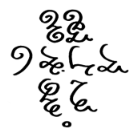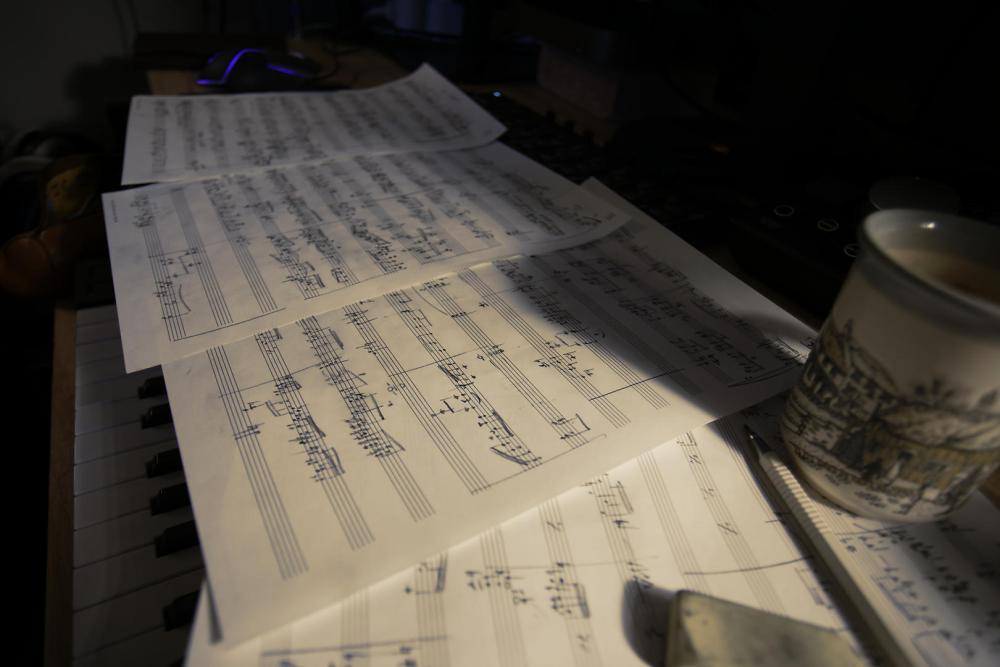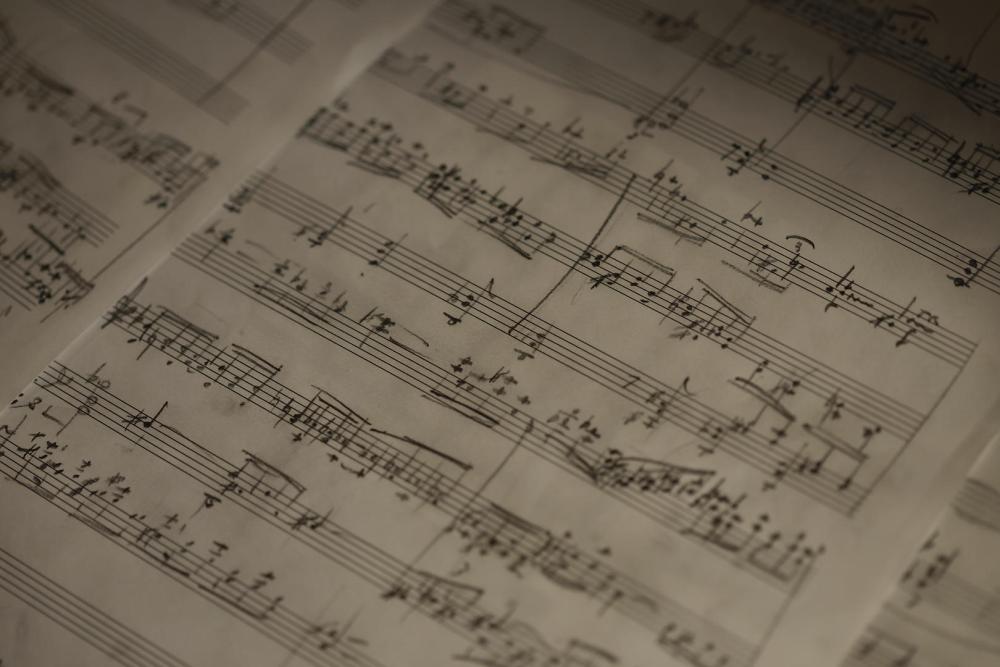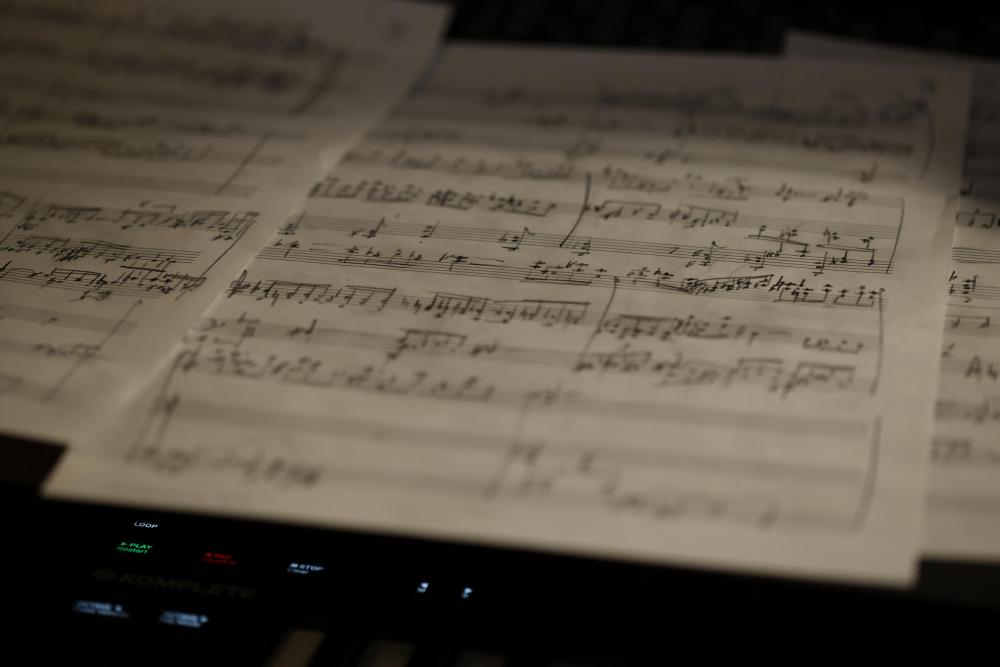Leaderboard
Popular Content
Showing content with the highest reputation on 02/13/2023 in all areas
-
In memory of the victims deceased in the February 6th earthquake, which has thus far claimed over 22,000 lives across southeastern Turkey and northwestern Syria. May their souls be welcomed safely into Heaven (or, given the fact that they are islamic-majority countries, into Jannah). It might be worth noting that this piece's title in French technically references a flood, which I preferred due to the overall chromatic feeling evoked by the key both the prelude and the fugue were rendered into. The prelude's marked rhythm, however, was meant to induce in the listeners a sense of shaking despair that often comes with natural disasters in general, both literally and metaphorically. YouTube video: SoundCloud link:2 points
-
wonderful, I corrected everything (lowered the clarinets at b10 and sim., changed the vla and vln parts at b36-37, corrected the typo at b81) and it sounds so much better! thank you @Henry Ng Tsz Kiu!1 point
-
Oh, I wouldn't be able to write directly to the computer! I'm from the previous century! I should buy a spiral notebook like yours (it reminds me of my writing classes where these models of notebooks were mandatory). Mine is a notepad but the pages stand out. Which is not very practical in the long run. Oh yes... Beethoven's manuscripts... Let's hope that we will not suffer from his hearing impairment in any case!1 point
-
I think the transitions are good now, particularly when it goes back to the first part.1 point
-
Your comment couldn't make me any more pleasure! Thank you for listening so attentively! So, I think you have very well understood the program of this fantasy. A dreamlike world, more or less lucid, more or less controlled, that can tip over at any time at the border of the nightmare. This is indeed what happens at the beginning of the second part. Is it intuitive on your part when you evoke the laughter of the devil (bassons, bass clarinet and contrebasson), but it is not for nothing that I called this cauldron "the bearer of light" (Lucifer in Latin...) (I thought the allusion would remain discreet, but your sagacity highlighted my little esoteric incartade, which was for me a "clin d'oeil", I also have fun with some concealments that amuse me a lot...). The "choral" part of all-classic harmonization is suddenly broken by this whistle that throws a kind of sarcastic fanfare in rhythmic superposition (the 2 of the military march superimposed on the 3 of the choral). I thought of a noisy parade scene, interrupting the almost dormant meditation of the faithful, like a merging. For the next part, introduced by a few soli, it is a piano meditation, slightly punctuated by the strings in harmonics, sul ponticello, mixed with a flottando, effectively combined with vibra, glock, celesta, harp and tubular bells in the distance (a slight tam too). Indeed, the very end (last note) of last movment may be a little long to make it heard. It is in fact after the solo of low flute and flute of a tenuto note to the violins 2 that goes al niente except the viola solo that ends alone. The compression of Youtube is not ideal to hear this detail perhaps. In any case, your attentive word orders me to continue! I'm going to run out of time, but I'm currently on a new attempt and I'm scratching my fly legs as soon as possible... (As you can check on the attached photos! I'm working on it... It will be for orchestra and the solo clarinet will have a major role).1 point
-
Hi Jonathon, I don't know it has the name of tragic sonata form! It's quite common in Mozart and Hedokoski call it as a subcategory of type 2 sonata with the return of the 1st subject material "post functional". With 22 minutes it's not even the first half of it??!!!😱😱 I love the triplets introduction and how it haunts later in later passages. I love those tremolos as well. For me the main shortcoming of the movement is that anapestic figure first introduced in trombone in b.47. It repeats way too many times later and not varied and developed properly. But here the introduction of it is good! I love the texture in no.2 with harps playing in the veil of tremolos. The laments of oboe and clarinet is good. It should be c sharp in b.92-93 for strings. For me I find the transition with the uprising octave figure redundant but I know it's an important motive later on. I do find the voice leading in b.104 has improvement, e.g. for the triple c sharp in b.106 and the progression from b.110-111. The modulation to D minor in no.5 is quite unexpected for me but fine! I love that oboe accompaniment. I know you want to have that tonal clash, but b.131 seems too much for me with the D-Db clash with the similar motion. For me the introduction of triplets in b.147-148 is too abrupt for me since it's not developed later. Nice wind playing with the waltz rhythm in no.6. The modulation to B major before number 7 is too abrupt for me with a clash of G and Gb to prepare for it. The reintroduction of the opening triplet is good but it seems not too match with the waltz rhythm. The preparation to no.8 is not satisfactory for me, but no.8 itself is very nice with the great orchestration. As Daniel noted the glockenspiel in no.9 is very nice. I love the usage of that anapestic rhythm in b.273 in trombones. Nice climax achieved but I don't like that repetitive anapestic rhythm in no.10. I have feeling you try to be Brahmsian and Stravinskian but not quite successful here. I love the section begins on b.348 and find the anapestic rhythm better here with different tone colours involved. A nice climax as well but I would prolong that dim 7 chord longer in b.372 before entering a different section. Nice reintroduction of triplets. I love the climax in b.410 which is the reminiscent of the climax before no.10!!! Again I don't like the aftermath anapestic figure. For this passage (and the one before) it will be great to add polyrhythm into it to compensate the heavy anapestic rhythm, probably a veil of triplets will be great. The climax in b.443 is quite "forced" with that rhythm. No.16 is the recap of no.11. The anapestic passage in b.491 is much better here with the glockenspiel triplets and direction in it. That dim.7 chord before no.18 is the same as in b.372, I would like to prolong that. No.18 is the return of the introductory material. The preparation before no.20 in during no.20 is very successful for me with the usage of that anapestic motive and dim.7 chord. I freakingly love that climax in no.21!!!!!! I love everything in C sharp minor and you have such a great build up for it!! Very great use of percussion there! I just find the climax too short for the build up and aftermath of it. I just find the transition to no.22 too abrupt as I suddenly find myself in the world of Ode to Joy, and the transition to no.23 is quite quick for me. That build up to no.24 will be really great!! I try my best to write honestly with more details since I think this can be a real great work!! This will be a really promising movement if not for that anapestic motive in my opinion!! I am really looking forward to your progress and final work, Jonathon!! Henry1 point
-
Hi @mazeth, I do think having the transition the music is smoother now! Haha, I suggest quick thick chords because I am a Beethovanian guy! I find the sound much better now with the pedals since it helps the harmony resonate! Of course with a real recording it will be even better! Thanks for sharing the revised version! Henry1 point
-
Hi @Henry Ng Tsz Kiu and @Luis Hernández, Wanted to share with you the latest version, after reworking the piece based on your feedback. In a nutshell: after several attempts (some too brutal, some too dull, not easy 😉), I found a transition which I found not too bad (between parts A and B - see bb. 41-46) after quite some struggle, and different attempts, I couldn't find anything convincing to replace the left hand part for bb. 74-87. I agree it was a bit dry - probably due to the "mechanical" play of this computer-generated version (once I can play it, it should be better, hopefully 😉). In the end, I simply added some pedal as suggested by Henry. I guess it was the best alternative. (the "quick thick chords" option was too "brutal" to my ears) Many thanks again, Take care, Julien1 point
-
But for a toccata like prelude I find this quite fine to have same patterns of rhythmic figure all over the movement, for example the prelude of the C minor and D minor prelude in Bach's WTC I. Maybe as Daniel said it's the problem of the digital sound only. Henry1 point
-
Hey @Giacomo925, I quite enjoy this orchestrated version of the finale! I think the energy here is even better than the original chamber setting with more colours and instruments! I've never written an orchestrated piece before, so maybe it's inapplicable. I just notice in b.10 and similar places the clarinet goes as high as the F, and the sound can be squeaky. The range is playable by clarinet, but do you want that timbre in the countermelody? Also in b. 36-37 the viola goes higher than the violins. and do you want that special timbre of a high register viola? Do you have 2 players for each of the woodwinds? I notice that in b.81 there are 3 notes for the oboe! Thanks for sharing your orchestrated version and I always love your output! Henry1 point
-
Hi @Fugax Contrapunctus, I always enjoy your pieces, and this is no exception. I love that two part structure in the prelude. I find that you love using the spread octave for the bass, e.g. in b.44 and 58 to provide a more homophonic texture, and in othet pieces as well. Thanks for sharing! Henry1 point
-
Beautiful. I love the pace of the prelude and the contrast of the fugue. me encanta1 point








